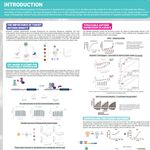Single-cell Genomics Tools for better understanding and treatment of Human Disease
-
Anindita Basu, PhD
Assistant Professor, Genetic Medicine, University of Chicago, Assistant Scientist, Center for Nanoscale Materials, Argonne National LaboratoryBIOGRAPHY
The basic units of biological structure and function are cells, which exhibit wide variation in regard to both type and state. We assess such variation by simultaneously profiling the transcriptomes of thousands of single mammalian cells or nuclei, using high-throughput emulsion microfluidics and DNA barcodes. When extracting intact cells from tissues and organs is technically challenging or impossible, single-nucleus RNA sequencing can provide an alternative way to obtain transcriptome profiles of such tissues. To systematically assess the differences between single cell and single-nuclei RNA-seq, we compared Drop-seq (single cell) and DroNc-seq (single nucleus) using a time course experiment on human induced pluripotent stem cells (iPSCs) differentiating into cardiomyocytes. We then applied DroNc-seq to postmortem heart tissue which is not accessible by Drop-seq. Our data confirm that DroNc-seq yields similar results to Drop-seq on matched samples and can be successfully used to generate reference maps for the human cell atlas. We are using Drop-seq and DroNc-seq to generate cellular maps and their transcriptional profiles of the gut (ileum and proximal colon in health and disease), female reproductive system, and heart. In addition to Drop-seq and DroNc-seq, we are also benchmarking and using single cell ATAC-seq and organoid models to generate these cellular, molecular and functional maps for the global Human Cell Atlas initiative.
Learning Objectives:
1. Describe and benchmark two microfluidic droplet based single cell and single nucleus RNA seq techniques on human iPSC derived cardiomyocytes
2. Recent applications of the above techniques in generating molecular and functional maps of in different complex tissues in context of health and disease
Please update your information
Certificate of Attendance
DOWNLOAD CERTIFICATE




